Did you know proper paint protection is vital to keeping your car looking great? Elements like bird droppings and the sun can damage your car’s exterior over time. This guide to Car Paint Protection Types will teach you how to protect your vehicle’s paint.
Car paint protection means covering your car’s paint with an invisible shield. This shield helps prevent damage and keeps your car clean. Installing PPF (Paint Protection Film) and ceramic coatings with a professional is essential. Whether you drive a luxury or a regular car doesn’t matter. To keep these protections working, use gentle, pH-balanced products for cleaning. They help avoid damage from harsh chemicals and rough brushes.
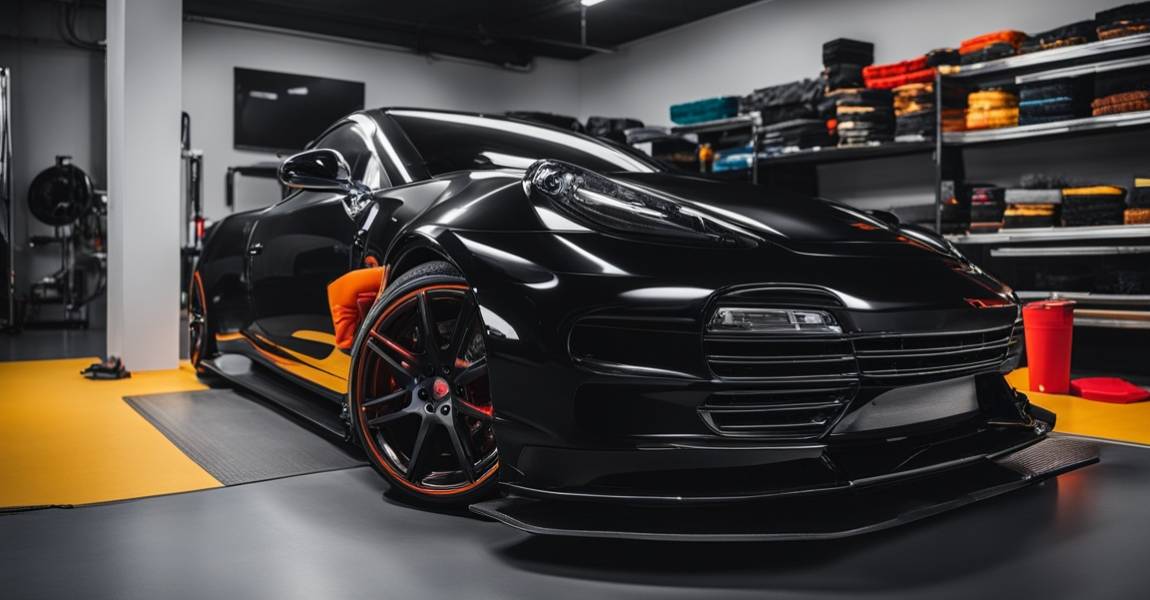
Table of Contents
Key Takeaways- Automotive Paint Protection
- PPF and Ceramic Coatings are essential for maintaining a vehicle’s aesthetic and structural integrity.
- Professional installation offers the best application precision and maximizes effectiveness.
- Applicable to any vehicle type, not just high-end models.
- Recommended reapplication schedule for paint protection treatments is every 1-2 years.
- Regular maintenance should involve gentle, pH-balanced products.
Introduction to Best Car Paint Protection Types
Car paint protection helps keep your car’s paint job beautiful and long-lasting. It includes various types that enhance your car’s look and defend against damage. Knowing your options helps you choose the right way to protect your car’s appearance for years.
The paint protection film (PPF), or car clear bra, is gaining popularity. It shields your car from UV rays, scratches, and stains. With Gloss, Matte, and Color options, it’s like an invisible armor for your car, keeping it looking great and valuable. Learn more about High-Gloss and Matte Finish PPF.
There are also treatments like ceramic spray coating. They stop paint from fading and protect against environmental harms. Hybrid coatings and car wax offer protection, too. They guard against scratches and weather, making your car shine more.
Paint sealants are great for fighting off UV damage, bird droppings, and tree sap. Getting professional auto detailing can also keep your car’s exterior in top shape. This boosts or even raises its resale value. The best protection for your car depends on what you need and like, but all choices aim to keep it looking new and safe.
Benefits of Protecting Your Car’s Paint
Protecting your paint is very beneficial. It saves time and money over time, improves the look of your car, and protects it well. Knowing the reasons for keeping your automobile’s paint safe is good.
Long-Lasting Protection
Car Paint Protection Types offers long-lasting protection. It stops the shine from fading due to weather, UV rays, and dirt. Paint Protection Films (PPF) last up to 10 years. This means less polishing is needed. Washing your car every week keeps the paint in good condition.
Enhanced Appearance
A good paint job makes your vehicle’s paint surface look great. A glossy finish shows pride in ownership and looks striking. Spark Car Wash’s Signature Wash uses Spark Ceramic and Carnauba wax. These protect and keep the surface of your car in a pristine condition. This helps the car’s value stay high.
Damage Prevention
Damage prevention is another key benefit. Protective coatings or films stop debris and light damage. They act as a barrier against rain, snow, and pollutants. This prevents fading and erosion. Your car stays in better condition for longer when using different Car Paint Protection Types.
UV Protection
UV protection protects the paint from sun damage. Car films and ceramics also protect against UV, acid rain, and bird droppings. These steps keep your automobile’s finish in exceptional condition.
Protecting the paint has many practical benefits. It keeps it looking new, cuts repair costs and extends its life. Your car stays protected with ceramics, Protection Films, or regular care.
| Protection Type | Benefits |
|---|---|
| Paint Protection Film (PPF) | UV protection, scratch resistance, and impact protection |
| Ceramic Coating | Long-term UV resistance and scratch protection |
| Car Wax | Prevents debris from sticking and enhances gloss |
| Paint Sealants | Barrier against UV rays, bird droppings, and tree sap |
| Detailing Spray | Removes water spots, dust, and fingerprints |
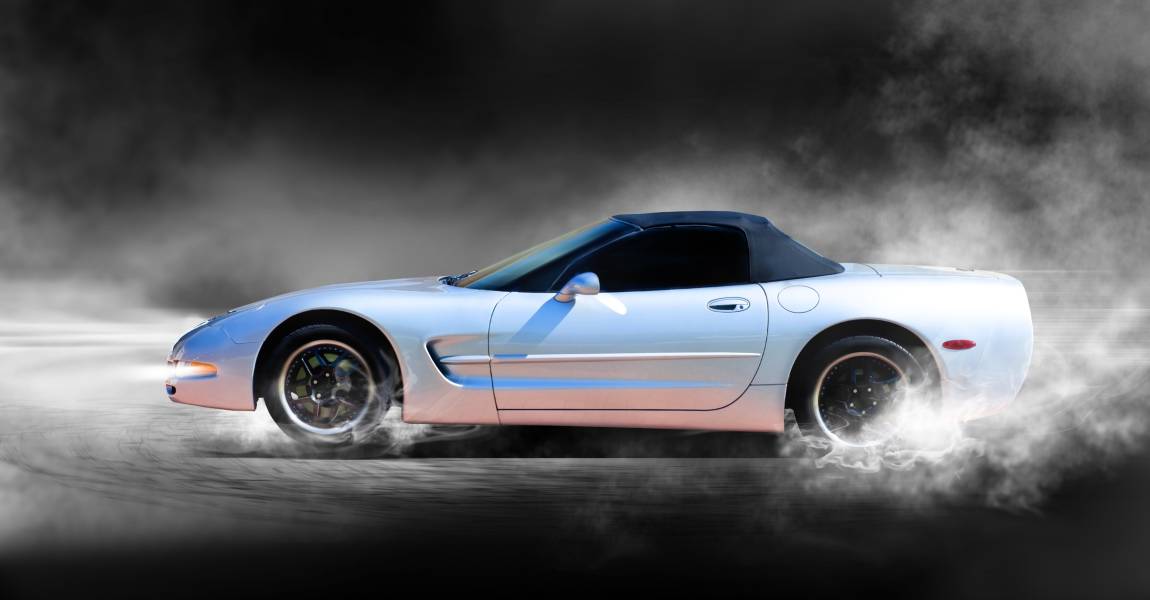
| Method | Level of Protection | Longevity |
|---|---|---|
| Paint Protection Film (PPF) | High | Up to 10 years |
| Ceramic Coating | Medium | Several years |
| Car Wax | Low | Months |
| Sealants | Variable | Months to a year |
Different Types of Paint Protection For Cars
There are many options for protecting your vehicle’s paint from damage. Each type has its own benefits, but all keep your car’s paint finish at its best.
Wax coatings protect your car by keeping dirt and scratches away. But you need to reapply wax every few months.
Synthetic sealants are a step up from wax. They form a strong barrier against harm, lasting for a few months.
Ceramic coatings are top-notch for guarding against UV and chemicals. They stick around for years, keeping cars shiny.
Graphene coatings are new and offer long-term shine and protection. They’re great at repelling water, too.
Polymer coatings bond with the paint, resisting weather and damage. They’re another solid choice for protection.
| Type of Paint Protection | Duration | Benefits |
|---|---|---|
| Car Wax | Up to 4 months | Prevents dirt and grime stains; protects against scratches |
| Paint Sealants | 3-6 months | Forms a protective barrier; durable against high temperatures |
| Ceramic Coatings | 2-4 years | Superior protection from UV rays; chemical resistance |
| Graphene Coatings | Long-lasting | Durable; deep gloss; water-repellent |
| Polymer Coatings | Varies | Creates chemical bonds; resilient against environmental hazards |
Clear paint protection films focus on shielding high-impact spots. They work well to protect certain car parts from minor harm. It’s a smart way to keep it in top shape.
Paint Protection Film Thickness and Durability
Paint protection film (PPF) varies in thickness and durability to cater to different levels of protection needs. Standard films typically range from 4 to 8 mils thick and provide good resistance against scratches and chips, suitable for most everyday driving conditions. Thicker films, often between 8 to 12 mils, offer enhanced durability and are ideal for high-impact areas or vehicles exposed to more severe conditions, delivering superior protection against heavier impacts and environmental elements.
What Is Self-Healing PPF?
Self-healing paint protection film (PPF) for cars is an advanced protective solution designed to maintain a vehicle’s pristine appearance by automatically repairing minor scratches and swirl marks. Made from a special elastomeric polymer, this film has the ability to heal itself when exposed to heat, such as sunlight or warm water. This innovative feature ensures that everyday wear and tear, such as abrasions from road debris and car washes, doesn’t mar the car’s finish. In addition to its self-healing properties, this type of PPF provides robust protection against environmental contaminants, UV rays, and chemical stains, making it an excellent investment for preserving the aesthetic and resale value of a vehicle.
Understanding Paint Protection Film (PPF)
The paint protection film market has grown to $250 million. It shows how important it is in protecting cars. This clear film guards against daily wear and environmental harm.
What is Paint Protection Film?
Paint protection film is a see-through, tough material made from urethane. It’s thicker than vinyl wraps, at 6-10 mils. This makes it 35% heavier but much stronger. It heals itself from minor scratches and offers unmatched protection.
Benefits of PPF
The benefits of PPF include keeping an automobile looking new and lasting longer. Key benefits are
- Damage Prevention: PPF is the top choice for defending against road wear, scratches, and chips.
- Self-Healing Abilities: Quality films fix minor damage with heat, keeping the paint surface of your auto looking great.
- Long-Term Savings: PPF reduces the need for paint touch-ups and repairs, saving money over time.
Installation Considerations
Professional installation of PPF is necessary for perfect fit and longevity. The process avoids bubbling or peeling. Costs vary from $300 for partial to $10,000 for full wraps—factors like film quality and vehicle shape matter.
Car PPF needs regular cleaning. This care extends its life up to ten years. Investing in PPF also increases your car’s resale value. It shows your dedication to keeping it in top condition.
| PPF Feature | Benefit |
|---|---|
| Self-Healing | Fixes minor scratches with heat. |
| Durability | Guards against debris and damage. |
| Cost Effectiveness of PPF | Lowers the frequency of paint repairs. |
| Professional Application | Ensures it fits right, preventing issues. |
| Enhanced Aesthetics | Keeps the car’s original look and shine. |
For more information on PPF, visit this detailed guide.
Ceramic Coating for Cars
Ceramic coating for cars is the best for keeping car paint safe. It is a liquid polymer that binds to the painted surface. This makes a very strong layer that is good at pushing water away. It protects against sun damage, rust, and dirt that cars face daily.
What is Ceramic Coating?
Ceramic coating provides top-notch protection and a shiny look. It’s best applied by professionals to cover evenly and bond well. There are different kinds, like nano-ceramic and silica, each with its own plus points and how long ceramic coating last.
For example, ceramic coating for Teslas provides long-term protection against elements such as UV rays, oxidation, and bird droppings, maintaining a glossy finish even years after application.
Advantages of Ceramic Coating
The benefits of ceramic coating make it a favorite among car lovers. The main advantages are:
- Long-Lasting Shine: It keeps cars shiny longer than waxes or sealants.
- Ease of Cleaning: Its hydrophobic nature means less dirt sticks, so cleaning is easy.
- Environmental Resistance: It protects from UV rays, oxidation, and pollutants.
Research has found ceramic coatings can make a car’s surface last three times longer than waxing.
What to Expect With Ceramic Coating Services
When you opt for a ceramic coating service, expect the technician to thoroughly clean, decontaminate, and prep the vehicle’s surface before applying the coating in multiple thin layers for optimal protection. Depending on the vehicle’s size and the complexity of the job, the process may take several hours or even a full day, but it results in long-lasting protection and a glossy finish.
How Do You Make Ceramic Coating Last On Your Car?
How do you make ceramic coating last on your car? Regularly wash it with a pH-neutral soap, avoid harsh chemicals or abrasive cleaning tools, and schedule periodic maintenance with a ceramic coating booster to preserve its protective qualities.
Maintenance Tips
To look after a ceramic-coated car, follow these simple steps:
- Regular Cleaning: Always use pH-neutral cleaning products.
- Routine Inspections: Check the coating often for any damage.
- Periodic Boosters: Use SiO boost sprays to keep the coating strong and protective.
Maintaining ceramic coating is easier than old methods but keeps your automobile looking great for a long time. Read our article on 8 Tips to Maintain a Clear Bra.
Vinyl Wraps as Paint Protection
Vinyl wraps are a great way to protect your paint. They are thin vinyl layers that cover your vehicle. They offer protection and let you easily change your car’s look.
What Are Vinyl Wraps?
Vinyl wraps are made of polyvinyl chloride (PVC). They protect your car from scratches and can change its color or design. Brands like 3M and Avery offer durable and flexible vinyl wraps.
Pros and Cons of Vinyl Wraps
- Pros:
- Wide variety of colors and finishes
- Relatively low-cost installation compared to PPF
- Easy removal and replacement
- Light protection against scratches and environmental factors
- Cons:
- Shorter lifespan of 2-7 years compared to PPF
- Susceptibility to damage from harsh weather
- Potential for bubbles and peeling if not properly installed
Knowing the pros and cons of vinyl wraps helps in making a smart choice.
Application Process
Applying a vinyl wrap needs skill to avoid bubbles and wrinkles. It’s best done by a pro. They clean the car, apply the vinyl carefully, and heat it to remove air.
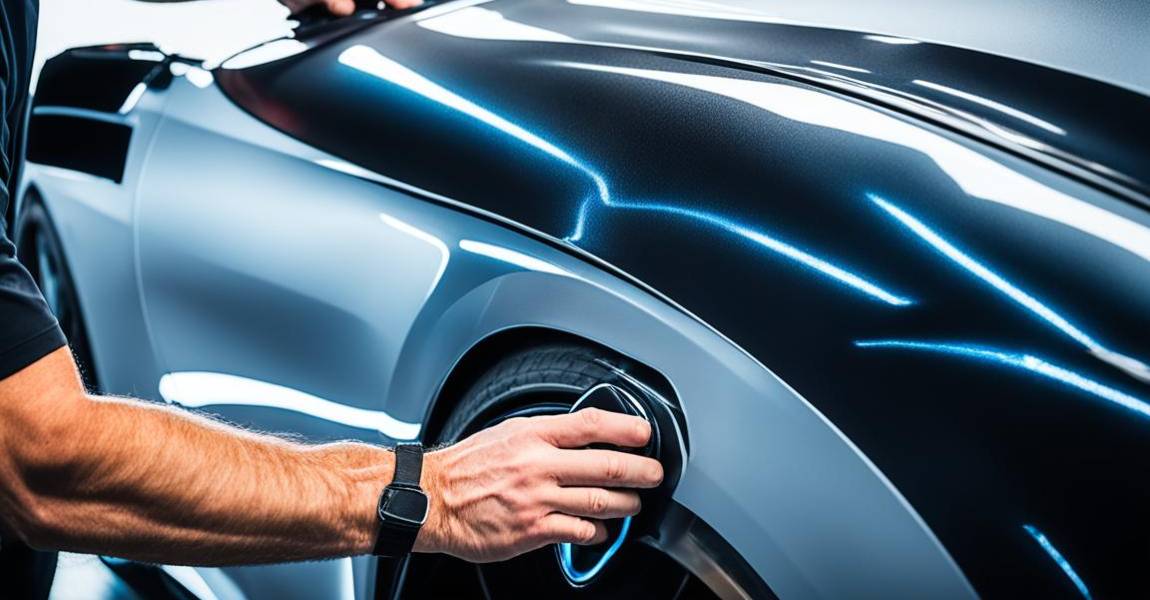
| Feature | Paint Protection Film (PPF) | Vinyl Wraps |
|---|---|---|
| Material | Polyurethane | Polyvinyl Chloride (PVC) |
| Thickness | 6-10 mm | 5-6 mm |
| Weight | Up to 10 pounds | Approximately 5-6 pounds |
| Lifespan | 5-10 years | 2-7 years |
| Cost | $700 – $9,000+ | $2,000 – $3,500+ |
| Installation | Professional Recommended | Professional Recommended |
| Main Use | Protection | Customization & Basic Protection |
Understanding vinyl wraps helps you make wise decisions for your vehicle. Careful application ensures your vehicle looks great and paint stays protected.
Traditional Waxing and Sealants
There are two main ways to protect your vehicle’s paint: traditional waxing and paint sealants. Both provide a shield against damage from the environment.
Traditional waxing, like using carnauba wax, gives your car a warm shine. It’s great for car shows or anytime you want your car to look its best. But, this type of waxing usually lasts only 3 to 4 weeks. It’s also less effective in very hot or bad weather.
On the other hand, paint sealants are made to last longer. They can protect your car for 3 to 4 months or more. Although they might not make your car shine as much as wax, they do a great job of keeping it safe. Things like bird droppings, acid rain, and UV rays can’t hurt your car as much.
Let’s look at how these two methods compare:
| Category | Traditional Waxing | Paint Sealants |
|---|---|---|
| Appearance | Warm, natural gloss | Glossy, synthetic shine |
| Durability | 3-4 weeks | 3-4 months |
| Reapplication Frequency | Every few weeks | Every 3-4 months |
| Environmental Resistance | Low to moderate | High |
our choice between waxing and sealants depends on what you want for your car. If you prefer a rich finish, carnauba wax is great. But for everyday protection, paint sealants are better. Using these methods regularly will help keep your car safe and looking great.
Choosing the Best Paint Protection for Your Vehicle
Selecting the right paint protection can be tricky. You need to know what you want, how much you can spend, and if you plan to apply it yourself. There are many paint protection options out there, from natural waxes to high-tech nanoceramic coatings and films. Each offers a different level of protection and lifespan.
Assessing Your Needs
What your car needs depends on what it faces daily. If your roads are full of debris, consider a tough paint protection film from brands like Xpel, 3M, and Suntek. These films are great for fighting off minor scratches and road debris.
Budget Considerations
Your budget is key in picking a paint protection. Carnauba wax and sealants are wallet-friendly and easy to use. But they need more frequent touch-ups. Meanwhile, higher-priced options like nanoceramic coatings and PPF give longer and better coverage.
Professional vs. DIY Application
You’ll need to choose between professional help and doing it yourself. Professional applications, like ceramic coatings, often guarantee the work with warranties. Brands like Ceramic Pro include warranties for extra confidence. DIY might save you money, but it demands careful application for the best results.
Different Types of Car Paint Protection Products
Different paint protections offer varied benefits:
- Natural Carnauba Wax: It’s affordable and easy but needs frequent reapplication.
- Paint Sealant: Lasts longer than wax, though reapplication is necessary.
- Spray Ceramic Coating: Easier than sealant with better durability.
- Nanoceramic Coating: Offers great protection with less upkeep, ideal for those seeking minimal maintenance.
- Paint Protection Film (PPF): Offers strong defense against damage, some even fix themselves.
When picking the right paint protection, consider these points alongside your needs and budget. Proper care will keep your vehicle looking great for a long time.
| Protection Type | Durability | Cost | Advantages |
|---|---|---|---|
| Carnauba Wax | Low | Low | Easy to apply, affordable |
| Paint Sealant | Medium | Medium | Better than wax, longer-lasting |
| Spray Ceramic Coating | Medium | Medium | Hydrophobic, easy to apply |
| Nanoceramic Coating | High | High | Durable, long-lasting, hydrophobic |
| Paint Protection Film (PPF) | Very High | Very High | Self-repairing, protects against physical impacts |
Maintaining Your Car’s Paint Protection
Keeping your vehicle in top shape is all about commitment to paint protection. You need to clean regularly, check for damage, and follow up on protection reapplications. Let’s explore how to keep your vehicle shining.
Regular Cleaning
Regular cleaning is vital to protecting your paint. Choose the right cleaners to wash your car often. This gets rid of harmful dirt and grime.
Make sure to rinse your car well. This prevents residue from damaging the paint’s shine.
Let’s look at how cleaning methods compare:
Cleaning regularly keeps the protective layer strong. Avoiding long gaps between washes helps prevent damage.
Inspecting for Damage
It’s essential to inspect for damage often. Look for any scratches, chips, or issues with the protective layer. Quick fixes can stop further harm and keep the car looking good.
Focus on areas like the bumper, hood, and mirrors. These parts are more likely to get damaged.
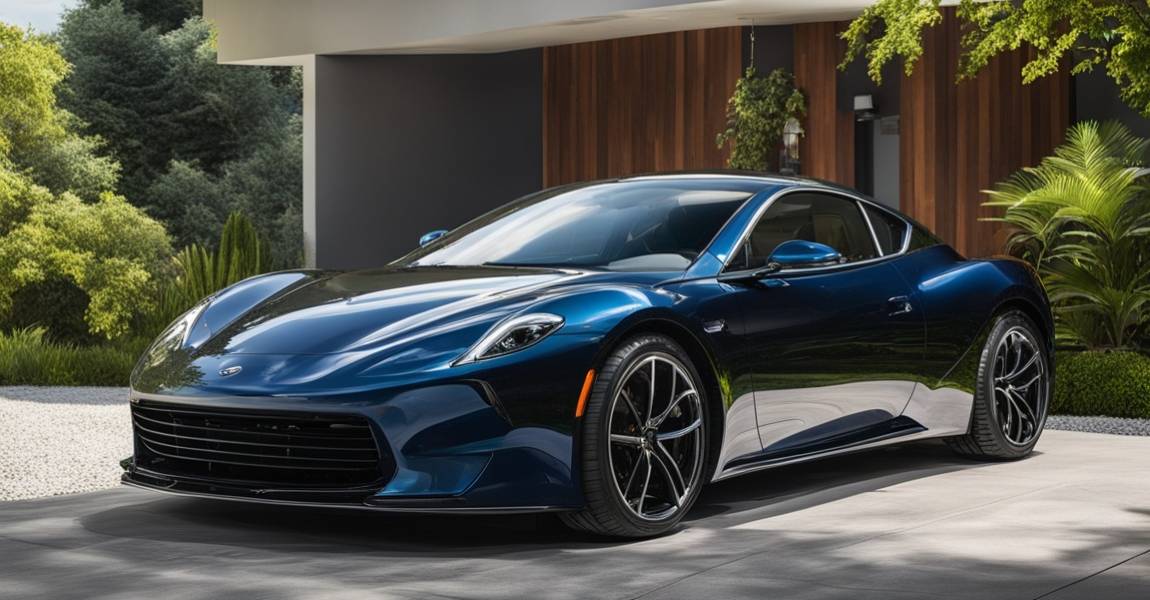
Reapplication Schedules
Remember the reapplication schedule for waxes, sealants, and coatings. High-quality waxes need a redo every few months for shine and protection. Synthetic sealants, which are more affordable, need a new layer every six months.
Ceramic coatings and paint protection films last longer, but check them occasionally. Here’s a quick look at when to reapply these protections:
| Method | Frequency | Benefits |
|---|---|---|
| Hand Wash | Weekly | Thorough cleaning with attention to detail |
| Automatic Car Wash | Bi-weekly | Convenient and quick |
| Waterless Wash | Weekly | Eco-friendly and good for spot cleaning |
| Protection Type | Reapplication Interval |
|---|---|
| Wax | Every 3-4 months |
| Synthetic Sealant | Every 6 months |
| Ceramic Coating | Every 2-5 years |
| Paint Protection Film | Every 5-10 years |
Sticking to these schedules keeps your paint protection effective. This way, your vehicle stays looking great for years.
Common Myths About Car Paint Protection
Common car paint protection myths often mislead many car enthusiasts about car paint protection. It’s important to understand the truth. This will help you make the right choices for your car.
Some people think paint protection films are scams. This isn’t true at all. Companies like 3M, XPEL, and LLumar make quality products. They protect against scratches, chips, and stains. These products come with extended warranties, showing they last and work well.
There’s also a myth that paint protection films are only for luxury cars. This is not correct. You can use PPF on any kind of car. It will protect your car and make it worth more when selling it.
Some say new cars don’t need extra protection. But even new cars can benefit from paint correction and protection. Adding a protective film or coating early on can stop damage. It keeps the car looking new.
Some myths about upkeep cause confusion. It’s not true that PPF doesn’t need any care. You should clean your car every week and quickly remove bird droppings and tree sap to keep the film in good shape.
There are also myths about the climate. No matter the climate, paint protection films help. They stand up well to different weather conditions.
Some people wrongly think you can’t mix protection methods. However, using PPF with ceramic coatings works well. This combo protects against UV rays, chemical stains, and scratches.
Lastly, some believe PPF will turn yellow or void car warranties. This is wrong. Modern PPFs have UV blockers to stop discoloration. If installed correctly, they also won’t affect your car’s warranty.
Here’s a detailed comparison to show the differences and benefits:
| Feature | Paint Protection Film (PPF) | Vinyl Wrap |
|---|---|---|
| Durability | 10+ years warranty | 4-5 years |
| Protection | Against scratches, chips, and stains | Limited protection, more for aesthetics |
| Price | Comparable to vinyl wrap | Comparable to PPF |
| Maintenance | Requires regular upkeep | Requires regular upkeep |
Understanding these myths about car paint protection helps you make better decisions. Taking care of your car’s exterior correctly will keep it looking great for a long time. It’s all about choosing the right protection and maintaining it well.
Enhancing Your Car’s Resale Value with Paint Protection
Good paint protection keeps your auto’s appearance looking new and boosts resale value. A car that looks well cared for impresses buyers right away. This can lead to a higher price when you sell it.
First Impressions Matter
First impressions are critical, especially when selling your car. A shiny exterior with good paint protection makes your car stand out. Cars with high-quality ceramic coatings catch buyers’ eyes, selling faster at better prices.
Long-Term Value
Paint protection is an investment in your car’s future value. Ceramic coatings and paint protection films guard against the elements. They keep your car in pristine condition with less need for paint touch-ups and detailing, which adds to its value over time.
Documentation and Proof
Keeping detailed paint protection documentation is crucial. Records of applications and upkeep work show how well you’ve cared for your car. This reassures buyers about the quality of the protection, boosting your car’s resale value.
Paint protection costs might start at around $1,000. But it’s worth it for the protection it provides against things like UV rays and bird droppings. This preserves your paint job and maintains its value.
For instance, paint protection film, priced from $1000 to $4500 for mid-sized cars, significantly increases resale value. The resale value depends on mechanical upkeep, mileage, and the car’s history. Using top-notch paint protection film with features like UV resistance shows buyers you’ve taken good care of the vehicle.
Conclusion
Choosing the proper paint protection for your car needs thought. We’ve looked at options like ceramic coatings, films, wax, and sealants in this guide to car paint protection. Each has its advantages and drawbacks.
Ceramic coatings and films are top choices for a long-term layer of protection. They keep your automobile looking good by fighting off UV rays and scratches. On the other hand, waxing and sealants are cheaper but need more frequent touch-ups.
Protecting your paint is vital for long-lasting results. Special coatings make cleaning easier by repelling water and dirt. Although you might want to apply products like MaxShine’s Graphene Ceramic Coating yourself, knowing about different protections is crucial. This will help your vehicle stay in top shape for many years. Learn more about paint protection methods to choose what’s right for you. Contact Pro-Tech Auto Shield & Nano Coatings to schedule a consultation.
FAQ’s
What Is The Best Type Of Paint Protection?
The best car paint protection depends on what you need and your budget. Ceramic coatings and PPF are top choices. They last long and protect well.
How Long Does Ceramic Coating Last On A Car?
Ceramic coatings can last 2 to 5 years. It depends on the product quality and how you take care of it.
Is Paint Protection Film (PPF) Worth The Investment?
Yes, PPF is a good investment. It protects your car from chips, scratches, and damage from the environment. It offers strong protection for a long time.
Can I Apply Ceramic Coating Or PPF By Myself?
You can find DIY kits, but having a pro do it is best. This ensures it goes on right without any issues, like peeling.
How Do Vinyl Wraps Compare To Other Paint Protection Options?
Vinyl wraps protect and let you customize your car, but they’re less durable than ceramic coatings and PPF. They’re great for frequently changing your car’s look.
What Maintenance Is Required For Ceramic-Coated Vehicles?
Keep your coated car clean with pH-neutral shampoo. Check it regularly. Avoid harsh chemicals and rough car washes.
How Often Should I Reapply Traditional Waxes Or Sealants?
Reapply wax every 2-3 months. Synthetic sealants can last up to 6 months, depending on how you use them and where you park your car.
Are There Any Misconceptions About Auto Paint Protection?
Many think all protection is the same: new cars don’t need it, and no upkeep is needed. Each type offers different benefits. Regular care is critical for lasting effects.
How Does Paint Protection Affect A Car’s Resale Value?
It provides excellent protection and the appearance of your vehicle looking it’s best with paint protection can increase its resale value. Showing you’ve maintained it well can also impress buyers.
What Are The Main Benefits Of Using Paint Protection Film?
PPF is excellent at stopping chips, scratches, and environmental harm. It works well on high-impact spots and can fix minor scratches on its own.




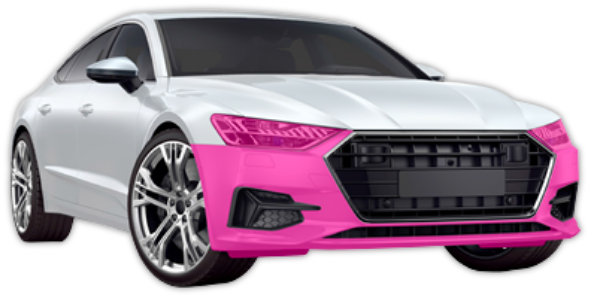
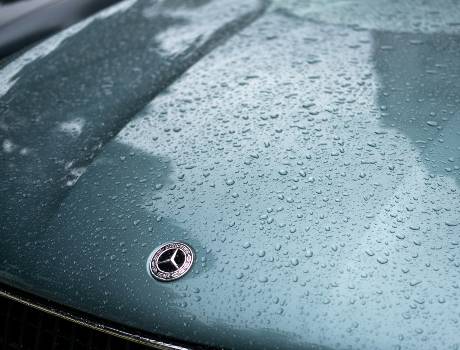
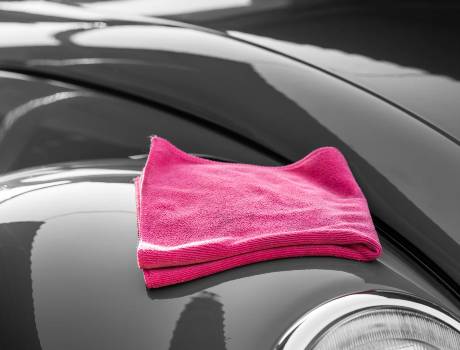

WHAT OUR CLIENTS ARE SAYING